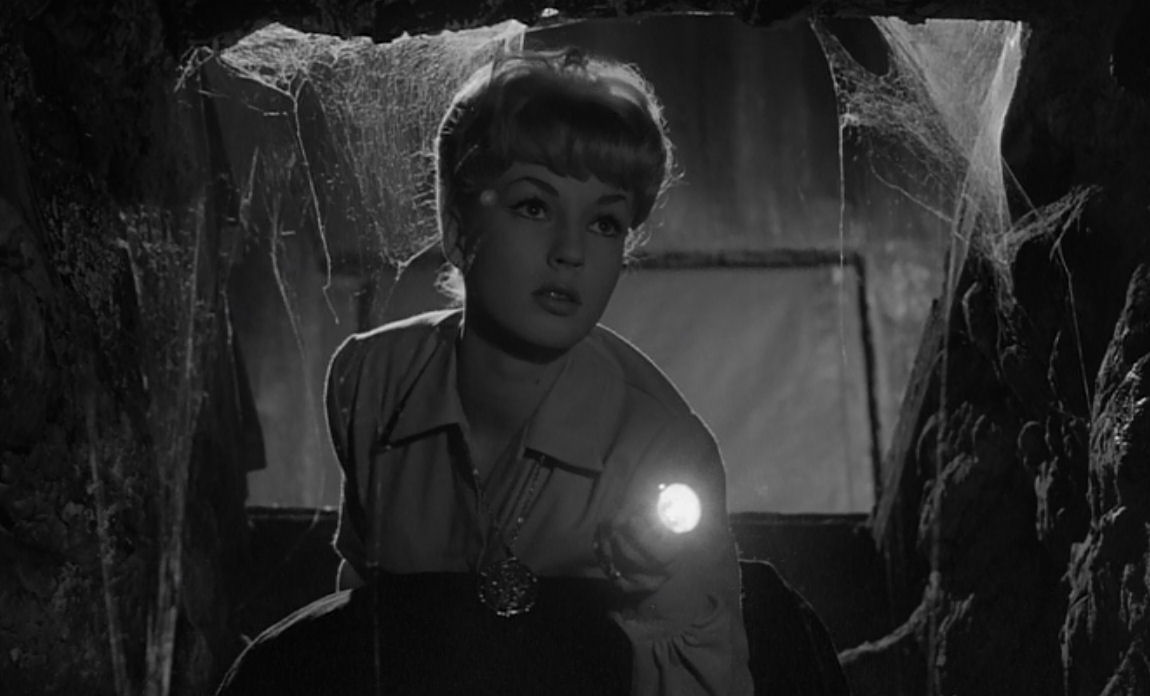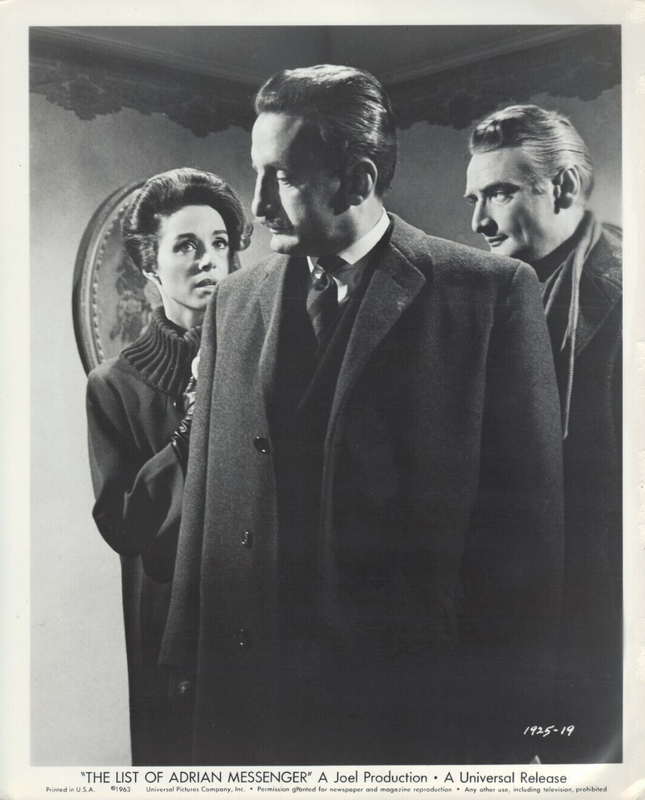Fata/Morgana [Left-Handed Fate / Panik 75] (Vicente Aranda, 1966)
Mar
9

Gim (Teresa Gimpera) modelling in a photo studio. The photographer, another woman in silhouette, has an identical hairstyle and outfit. DP: Aurelio G. Larraya.
1960s
Nattlek [Night Games] (Mai Zetterling, 1966)
Mar
8
International Women's Day

Jan (Jörgen Lindström) and his mother (Ingrid Thulin) share a bed while she reads him a bedtime story. DP: Rune Ericson.
A mother for International Women's Day
When returning home to the castle he grew up in, Jan attempts to free himself from the suffocating clutches of his neurotic mother.
This film was the final straw for Shirley Temple; she resigned from the board of the San Francisco Film Festival calling Zetterling's film “pornography for profit”.
“She's always happy. She desires nothing, envies no one, is curious about nothing. You can't surprise her. She doesn't notice the humiliations, though they happen to her every day. It all rolls off her back like some waterproof material. Zero ambition. No moral code. Not even a whore's love of money.” Io la conoscevo bene [I Knew Her Well] (Antonio Pietrangeli, 1965)
Mar
5
Crispus Attucks – 1770

Adriana (Stefania Sandrelli) seen through her apartment window. Rome is reflected in her face. DP: Armando Nannuzzi.
A wasteful act: Crispus Attucks, (arguably) the first American victim in the American Revolution, dies on March 5th, 1770.
– The Writer
An ambitious but aimless girl – she wants to be loved, and to be a model, a proto-Edie – mills about her day.
Sublimely shot, we see Adriana through glass panes, in reflections, in an off-focal plane, in other people's words.
– Burn witch, burn witch, burn! – Dig that crazy beat, man.The City of the Dead (John Llewellyn Moxey, 1960)
Mar
3

Nan Barlow (Venetia Stevenson), exploring. DP: Desmond Dickinson.
”'I know how you feel,' Reiko says quietly. 'And I will follow you wherever you go.'”憂國 [Yūkoku / Patriotism or the Rite of Love and Death] (Yukio Mishima, 1966)
Feb
26
1936

Reiko (Yoshiko Tsuruoka) walking through her lover's blood, her kimono drenched. DP: Kimio Watanabe.
Covers February 26–28, 1936.
– intertitles
“For me, Afrikareise is, in its own genre, the most intense sound film that exists. Sound and images are in synch like in nature (even if it isn’t about the natural sound of something). The sound becomes the acoustic portrait of the visual action.”Unsere Afrikareise [Our Trip to Africa] (Peter Kubelka, 1966)
Feb
22
National Wildlife Day

A frame (source) shows a freshly killed zebra on its side. The film stock's perforations and sound track are visible. DP: Peter Kubelka.
Wild animals for this year's first National Wildlife Day (USA). A second one is on September 4.
– Peter Kubelka, via
Commissioned to film a rich Austrian couple's hunting trip, Kubelka sat on the material for several years before editing it in something more than the sum of its parts.
– Why are we making pancakes? – Monsieur likes them. Besides, what else is there?Les abysses [The Depths] (Nikos Papatakis, 1963)
Feb
18
pancakes

Michèle and Marie-Louise (real-life sisters Francine and Colette Bergé) as the real-life Papin sisters prepare crêpes for Monsieur. DP: Jean-Michel Boussaguet.
Assalto ao Trem Pagador [Assault on the Pay Train] (Roberto Farias, 1962)
Feb
17
WH helicopter incident – 1974

The favelados-turned-train-robbers. DP: Amleto Daissé.
A heist on the date of the 1974 White House helicopter incident.
Il mare [The Sea] (Giuseppe Patroni Griffi, 1962)
Feb
17
1962

The actor (Umberto Orsini) approaches a hotel lobby. A blackboard notes the date: February 17, 1962. DP: Ennio Guarnieri.
“There's nary a conspiracy. And if I'm right about this, it's a far older sin than politics.”The List of Adrian Messenger (John Huston, 1963)
Feb
16

Lady Jocelyn Bruttenholm (Dana Wynter), Anthony Gethryn (George C. Scott), and Raoul Le Borg (Jacques Roux). DP: Joseph MacDonald.
– Adrian Messenger